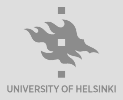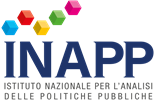Not only mermaids. Sea imaginaries by Italian pupils pursuing ocean literacy
Abstract
This work is in line with recent the British and American ocean academic debate and aims to develop insights among scholars and teachers with discussions on the sea, ocean literacy and oceanic citizenship. The Authors state the key role played by ocean literacy in the school context and affirm that this is a significant educational tool for stimulating a sense of personal responsibility that contributes to the conservation of water and ocean environments. In so doing, they provide their preliminary findings on children’s sea ideas and perceptions which emerged in a piece of work realized by 540 primary school pupils resident in northern Italy. From their representations, in the form of drawings, an idea of the sea is presented which is often stereotyped. This is a meaningful starting point to reflect on the marine imaginary that pupils may develop in the primary school years while the work also sets out to provide a frame to focus perhaps on a more critical and effective geographical and environmental education practice in Italian schools. We believe that the positive image of the sea that most of the children involved in the research demonstrated, can facilitate the task of offering marine environmental education and is well aligned with the guidelines proposed by the current scientific debate on Ocean Literacy.References
Callegari F., Geografia del mare e della pesca. Le basi della consapevolezza, Milan, Mursia, 2003.
Casciaro A., “La percezione del paesaggio marino in bambini di scuola primaria”, in Morri R (Ed.), Insegnare il mare. Paesaggi costieri e vocazioni marittime, Rome, Carocci, 2012.
Costanza M.R., Cuori che aspettano di essere considerati. Segni, tracce, disegni per ascoltare i sentimenti dei bambini, Milan, Franco Angeli, 2007.
Crotti E. and Magni A., Non sono scarabocchi. Come interpretare i disegni dei bambini, Milan, Mondadori, 2009.
Fletcher S. and Potts J., “Ocean Citizenship: An Emergent Geographical Concept”, Coastal Management, 35, 2007, pp. 511-524.
Fletcher S., Potts J., Heeps C. and Pike K., “Public awareness of marine environmental issues in the UK”, Marine Policy, 33, 2009, pp. 370-375.
Frascani P., Il mare, Bologna, il Mulino, 2008.
Giorda C., La Geografia nella scuola primaria. Contenuti, strumenti, didattica, Rome, Carocci, 2006.
Giorda C., Il mio spazio nel mondo. Geografia per la scuola primaria, Rome, Carocci, 2014.
Giorda C. and Pasquinelli D’Allegra D., “Insegnare il mare”, in Morri R. (Ed.), Insegnare il mare. Paesaggi costieri e vocazioni marittime, Rome, Carocci, 2012.
Haley G., Lotze H.K. and Wallace D., “Youth and the sea: Ocean literacy in Nova Scotia, Canada”, Marine Policy, 58, 2015, pp. 98-107.
Louchet A., La planète océane. Precis de géographie maritime, Paris, Armand Colin, 2009.
Malatesta S., Per fare l’albero ci vuole la carta. Note critiche per un curricolo geografico, Milan, Guerini, 2010.
Malatesta S., La geografia dei bambini. Luoghi, pratiche, rappresentazioni, Milan, Guerini, 2015.
McKinley E. and Fletcher S., “Individual responsibility for the oceans? An evaluation of marine citizenship by UK marine practitiones”, Ocean & Coastal Management, 53, 2010, pp. 379-384.
McKinley E. and Fletcher S., “Public Involvement in Marine Management? An Evaluation of Marine Citizenship in the UK”, Littoral 2010, 100001, 2011.
McKinley E. and Fletcher S., “Improving marine environmental health through marine citizenship: a call for debate”, Marine Policy, 36, 2012, pp. 839-843.
MIUR, Indicazioni nazionali per il curriculo della scuola dell’infanzia e del primo ciclo d’istruzione, 2012, http://www.indicazioninazionali.it/document.
Moore P. and Phillips C., L’oceano di plastica. La lotta per salvare il mare dai rifiuti della nostra civiltà, Milan, Feltrinelli, 2011.
Morri R., Insegnare il mare. Paesaggi costieri e vocazioni marittime, Rome, Carocci, 2012.
Nigris E., Didattica generale, Milan, Guerini, 2003.
Oliverio Ferraris A., Il significato del disegno infantile, Turin, Boringhieri, 1973.
ONU, United Nation Convention on the Law of the Sea, 1982, www.un.org/Depts/conven tionsgreements_texts/unclos/closindx.htm.
Rolling J.H., Art based research primer, New York, Peter Lang, 2013.
Santin S. and Santoro F., “The Ocean as a teaching tool: the first MOOC on Ocean Literacy”, Geophysical Research Abstracts, EGU2017-17389, EGU General Assembly, 2017.
Squarcina E., L’ultimo spazio di libertà. Un approccio umanistico e culturale alla geografia del mare, Milan, Guerini, 2015.
Squarcina E. and Pecorelli V., “Ocean citizenship: a useful concept for environmental teaching and citizenship education”, Journal of Research and Didactics in Goegraphy (J-READING), 2, 2017, pp. 45-53.
Squarcina E. and Pecorelli V., Diventare grandi come il mare. Esperienze didattiche
tra ocean citizenship e ocean literacy, Milan, Guerini, 2018.
Steel B.S. et al., “Ocean literacy in the United States”, Ocean & Coastal Management, 48, 2, 2005, pp. 97-114.
Tuan Y-F., “Spazio e luogo, una prospettiva umanistica”, in Vagaggini V. (Ed.), Spazi geografico e spazio sociale, Milan, Franco Angeli, 1978.
Vallega A., Per una geografia del mare. Trasporti marittimi e rivoluzioni economiche, Milan, Mursia, 1984.
Vallega A., Ecumene oceano: il mare nella civiltà: ieri, oggi, domani, Milan, Mursia, 1985.
Vallega A., Geopolitica e sviluppo sostenibile. Il sistema mondo nel secolo XXI, Milan, Mursia, 1994.
Vincent A.C.J., “Saving the shallows: focusing marine conservation where people might care”, Aquatic Conservation: Marine Freshwater Ecosystem, 21, 2011, pp. 495-499.
Voyer M. et al., “It’s part of me. Understanding the values, images and principles of coastal users and their influence on the social acceptability of MPAs”, Marine Policy, 52, 2015, pp. 93-102.
Downloads
Published
Issue
Section
License
The Author assigns to the Nuova Cultura and to Italian Association of Geography Teachers all rights under copyright that can exist in and to the submitted paper. The Author warrants that the paper and images (photos, maps, graphs etc.) are original and that he/she is the Author of the submitted contribution and its parts; in the case of images taken by other publications, the Author must provide a specific authorization and must pay in advance any copyright.

This work is licensed under a Creative Commons Attribution 4.0 International License.












